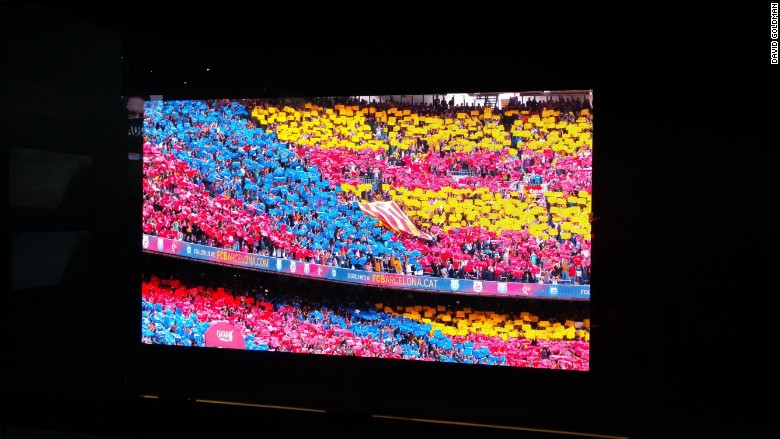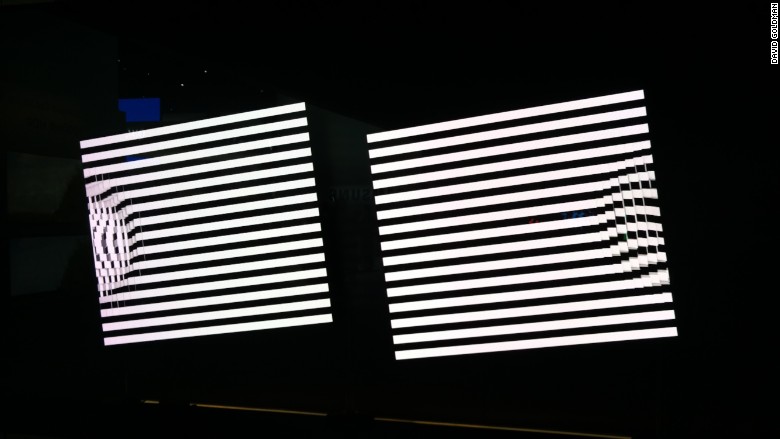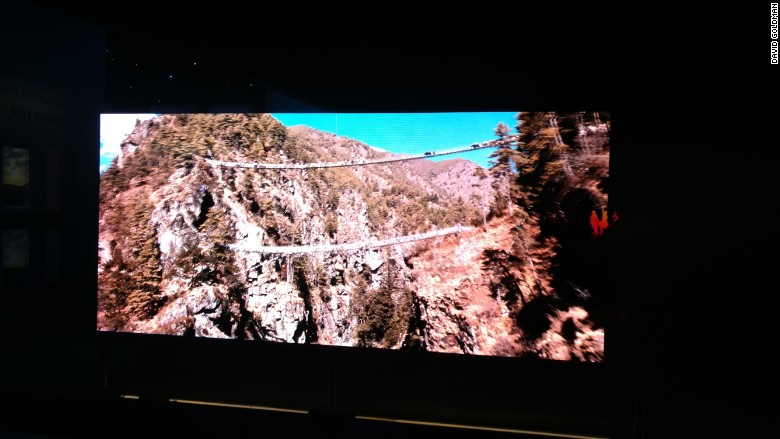
Samsung rarely disappoints when it debuts new TVs. Its latest marvel, launched at this year's CES, definitely is one of the best ever.
The new TV technology allows you to stack televisions like Lego bricks. When you move them or even spin them around, a powerful processing engine powering the multiple displays knows where the TVs are in real space, and it adjusts the picture accordingly.
The best part of Samsung's new TVs: Once stacked together, the displays appear to combine to form one TV.
That's a remarkable achievement. There is no shortage of large displays that stack monitors on top of one another and next to another to form large screens. But you still see those black lines in between the displays. That's not the case with Samsung's technology.
Here's a look at Samsung's new TV technology in action:
1) The standard TV

Set up like this, Samsung appears to have a 65-inch TV with a standard 16:9 aspect ratio. But it's not one TV screen -- it's actually two.
2) The screens turn around

The two screens split apart, turn on their axes and come back together. Though they appear to be perfect squares, they're actually slightly rectangular. So when they come together again, the unified screen will take on a different shape.
3) The cinematic display

Back together again, now it's a 91-inch TV with a 21:9 aspect ratio. Many movies are shot in 21:9, which on a standard HD TV produces letterboxing (that black stripe on the top and bottom of your TV). If you had the new Samsung TV in your home, you could just turn your two screens on their sides.
Samsung believes that its new TV technology will mostly appeal to business customers in need of large displays that can be modular to fit their needs. For example, maybe a museum needs a tall display for one exhibit and a square display for another. Instead of purchasing different displays, the museum could just stack its existing displays differently.

